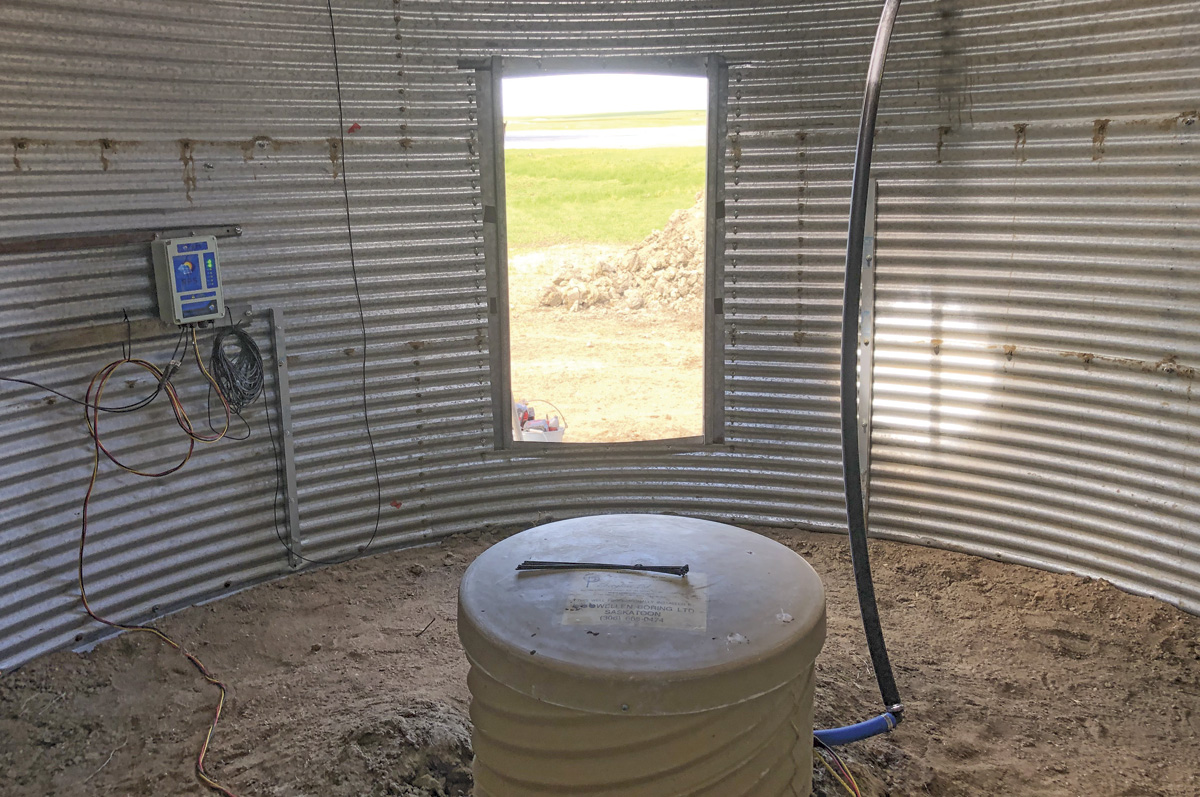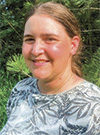It is a bit of a strange sight when you drive down the road and out in the middle of the pasture is a grain bin. Not just a grain bin, but one that has a water line coming from the top and dropping down to a trough. My husband, Gregory, always laughs and jokes, “Man, how tough was that grain?”
We’ve been facing a very serious drought the past few years, and there is no real indication that it is going to change anytime soon. Even if we did have a few wet years again, that doesn’t mean we won’t be in this situation again.
We’ve done a few different things to try to get by. We tried to expand the slough so it will hold more runoff and rain in the spring, but that only works if there is snow or rain. We also tried to haul water to the cows at pasture, but that meant someone was always on the road every day to take the water 18 miles from the yard to the pasture. We are simply too shorthanded to make it work well.
So, we tried something different. It had a lot more upfront expenses, but the long-term gain is immeasurable and should be useful across generations. We had three water wells dug for the three different pastures. We were incredibly lucky in that we were able to hit streams with good water and plenty of it.
Gregory then did some research to try to figure out the best way to try to get the water out of the ground and into a trough. He came to the conclusion that we needed to try a solar pump system. He researched prices and availability, and we ended up buying through a company in California. They were very good to talk to and quick to provide information about different setups and designs.
Because we were going with a solar pump system, we needed to try to figure out a way to have a safe and secure place to set up the solar panels and to fence the cows away from the well head. We are always trying to figure out ways to use materials we have or materials that we can get a hold of cheaply.
Gregory was kicking around a few ideas when he stumbled upon a thought: What about a grain bin? We had the top three sheets and a roof off of a 14-foot bin. The roof provides a space for the solar panels, the body of the bin keeps the cows away from the well head, and the inside walls provide space for the control box and wires.
Gregory did a bit of prep work with the bin before we moved it out to the pasture. He made the rack for the solar panels out of angle iron, and he bolted eyelets on the bottom of the bin sheet.
Next, we moved the new well house out to the pasture. We own a Mack truck with a picker and a flatdeck trailer. We were able to pick up the bin and put in on the trailer. At the pasture, Gregory was able to lift the bin and then set it down over the well head with the solar panels facing due south.
 The space in the interior of the bin topper is adequate for the well and the solar power units and keeps cattle from rubbing on the structures. Photo by Heather Eppich.
The space in the interior of the bin topper is adequate for the well and the solar power units and keeps cattle from rubbing on the structures. Photo by Heather Eppich.
After the bin was in position, we pounded 7-foot pieces of 1-inch rebar through the eyelets and into the ground. Gregory had welded an oversized nut on the top of the rebar that was too big to fit through the eyelets and so held everything in place.
On the inside of the bin, there is more than enough space to neatly run the wires and hang the control box on the wall.
We left the dropline to the pump long enough to reach and run inside a 2-inch waterline that we put in at the top of the bin just under the roof. On the outside of the bin, the waterline rests in a cradle and slopes down to the trough. This design enables us to pull the dropline out of the waterline and run it out the door of the bin in order to fill a water truck or whatever we may need.
On the outside of the bin, we built the cradle for the waterline with angle iron. We pounded in wooden posts and then made height extensions out of 1.5-inch angle iron screwed to the post. On top of the extensions, Gregory welded 1-foot lengths of 3-inch angle iron. A long piece of 2-inch angle iron rests in the 3-inch angle iron. The waterline rests on top of the 2-inch angle iron and is secured in place by UV-resistant zip ties.
The cradle gently slopes downward until it reaches the trough. This was done so that when the solar pump stops pumping, the water will drain into the trough due to gravity instead of sitting in the line where it may freeze.
We heard many terrible stories about people who had relied on backup batteries, and so we decided to design a system that would work without batteries. We chose to have larger troughs so our animals would have two or three days’ worth of water in case the day was terribly overcast or in case of some kind of malfunction with the solar system.
We liked how well the bin worked for a well house so much that we found two more from neighbors who were no longer using them due to their size, to do the other wells the same way. After we were able to get the well houses set up, our cows were never thirsty. It took quite a bit of effort to reach that goal, but there is great comfort in knowing that it is all in place for next year and in years to come.








